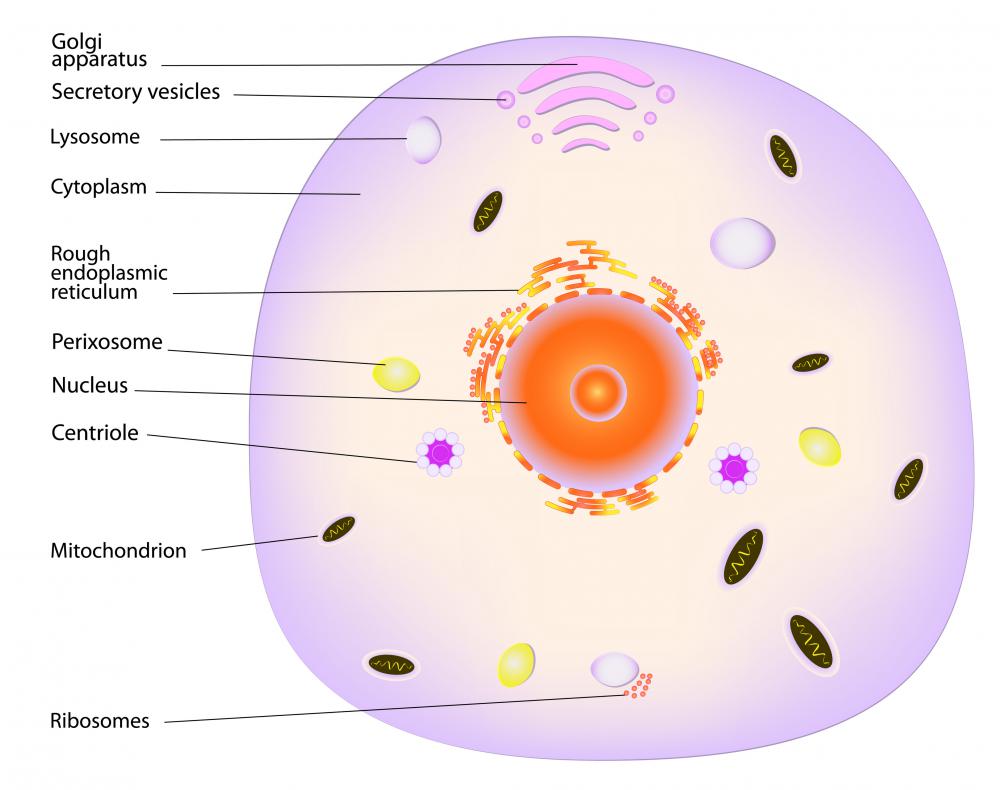At WiseGEEK, we're committed to delivering accurate, trustworthy information. Our expert-authored content is rigorously fact-checked and sourced from credible authorities. Discover how we uphold the highest standards in providing you with reliable knowledge.
What Is Ribosome Biosynthesis?
Ribosome biosynthesis is the process through which organelles known as ribosomes are formed within a cell. Ribosomes are vital to the function of the cell due to their role in protein synthesis. The process of ribosome biosynthesis is both extremely complex and highly evolutionarily conserved, meaning that its pathways are similar across different types of organisms. Ribosome biosynthesis has been studied both in vivo, within living cells, and in vitro, as part of a laboratory environment.
An essential component of the cell, ribosomes carry out the process of translation. In translation, genetic information encoded in pieces of messenger ribonucleic acid (mRNA) is matched with corresponding information carried by transfer RNA (tRNA) molecules, each of which carries a specific amino acid. The amino acids are assembled in the ribosome to form a protein. Making ribosomes requires a high energy input, so the rate of ribosome biosynthesis in a cell depends on both the need for proteins and the amount of nutrients in the extracellular environment

Ribosomes are made up of ribosomal RNA (rRNA) and ribosomal proteins. In order to synthesize ribosomal proteins, the same process of translation used to make other proteins must occur. The genetic codes for ribosomal proteins are carried by fragments called precursor mRNAs (pre-mRNAs). Pre-mRNAs, like other RNA molecules, are transcribed from the cell’s deoxyribonucleic acid (DNA) in the nucleolus, which is a site within the nucleus. After transcription, pre-mRNAs are processed by enzymes and transported to the cytoplasm, where ribosomes translate them into ribosomal proteins.

rRNA is created through complex biochemical processes which occur in the nucleolus. In the first step, precursor rRNA (pre-rRNA) is transcribed from DNA. The pre-rRNA is then modified into mature rRNA by enzymes in the nucleolus. As modification occurs, the rRNA begins to migrate from the nucleolus towards the outer regions of the nucleus, or the nucleoplasm.
At this point in the process, the ribosomal proteins that have been synthesized in the cytoplasm are imported into the nucleolus and assemble onto the rRNA. This produces the two ribosomal subunits, the main components of the ribosome. The ribosome, nearly complete, exits the nucleus and undergoes final processing in the cytoplasm.
The process of ribosome biosynthesis is still being studied in living cells, due to its level of complexity. Studies are often carried out in the laboratory on Saccharomyces cerevisiae, a species of budding yeast. It has also been found that bacterial ribosomes can be synthesized in vitro, outside an organism, using rRNA and ribosomal proteins.
AS FEATURED ON:
AS FEATURED ON:












Discuss this Article
Post your comments